Garden Paving Ideas: 14 Inspiring Patio Designs for Your Outdoor Space
Try these garden paving ideas to get the most from your patio design and complement the rest of your outdoor space
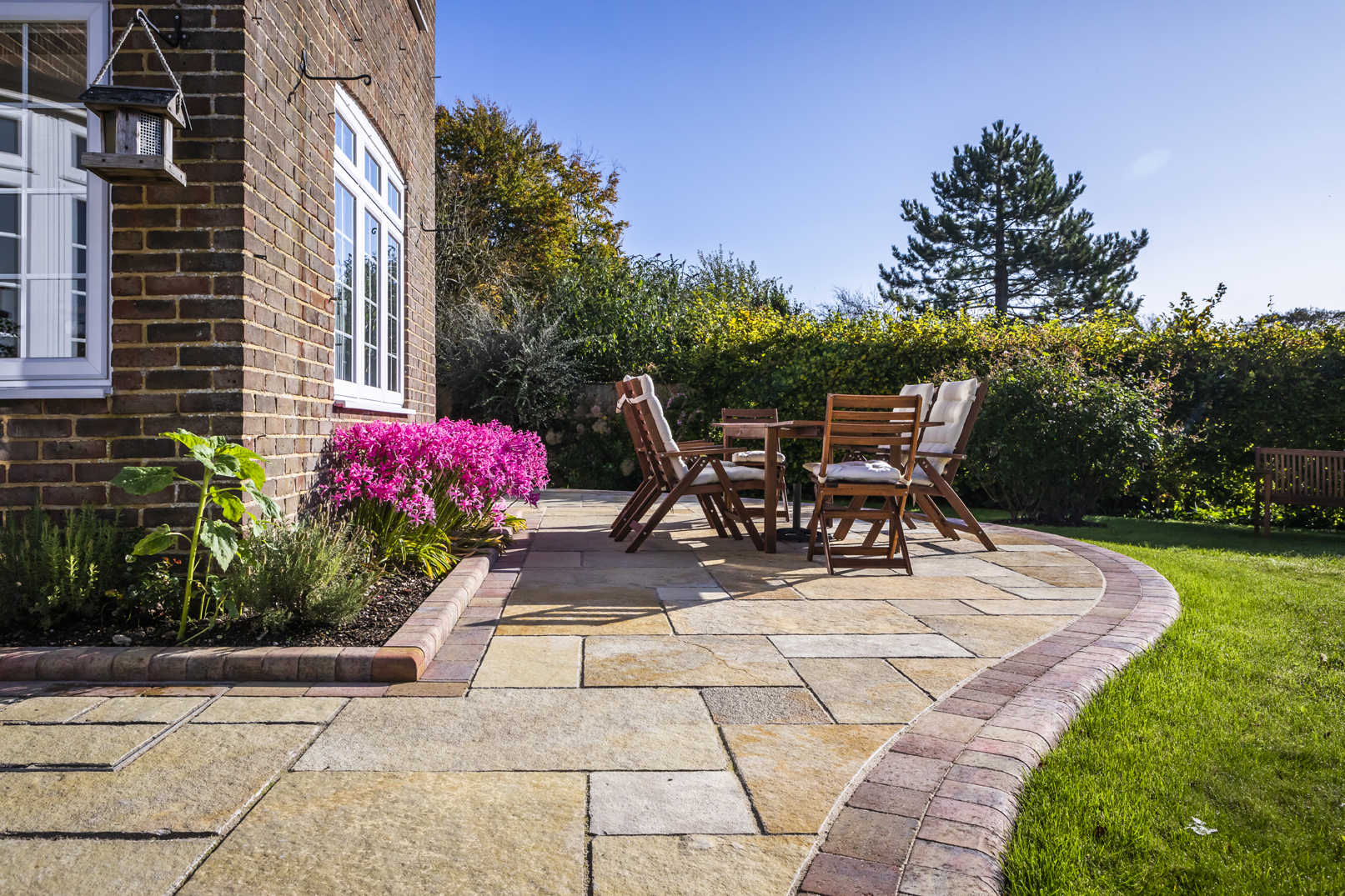
Finding the right garden paving ideas is one of the most important elements of your overall garden design, as your patio can set the tone for the entire outdoor space.
Your choice of material, style and layout can make the difference between a modern or traditional look and will have an impact on budget, so getting it right is important when looking at patio ideas.
To get you on your way with deciding on a paving design for your garden project, we've pulled together some of the best garden paving ideas around, with brilliant examples of how they can be used in a real space to great effect.
Garden Paving Ideas: Where to Start
"As well as providing a sunny spot to relax, a well-designed garden should help your house sit harmoniously within its setting," explains homes journalist Rebecca Foster. "Pavers often represent one of the biggest outgoing costs when landscaping an outdoor space, so it’s important to do your research and invest in high-quality products that stand the test of time.
"Whether you’re designing a new garden from scratch or re-laying an existing patio, careful consideration should be given to the paving material you choose. As well as looking good, your chosen product needs to stand up to all that the British weather throws at it.
"Plus, you’ll want to lay down a surface that offers a decent service life and doesn’t require constant maintenance. Durability is another key factor to investigate, too – particularly for high traffic patios that’ll receive a lot of footfall."
1. Mix and Match Garden Paving Ideas
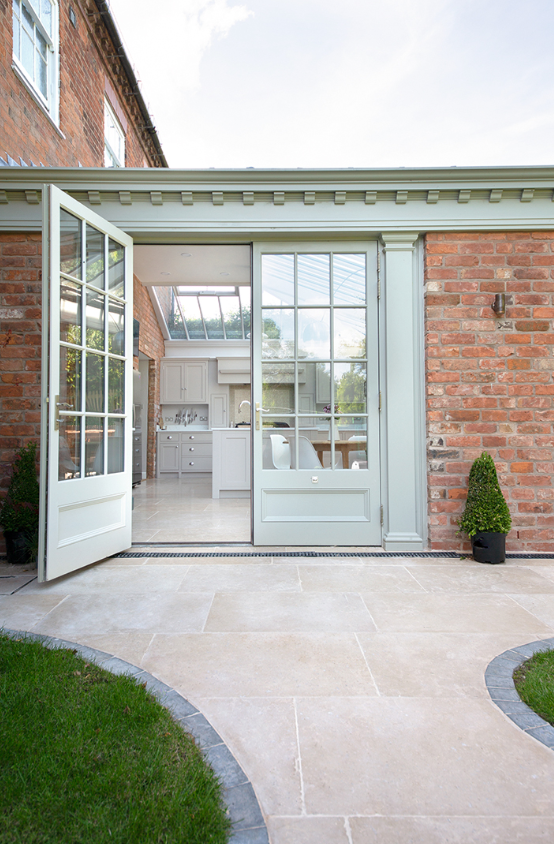
Choosing just one material as your garden paving can create a scheme that falls flat, where mixing different patio edging ideas and materials can add depth and sophistication to your space.
Consider a contrast border for paving to signify a change between materials or levels is a great idea, while switching up colours for the likes of a paving circle in a contrast colour or material can create an interesting feature too.
Using a contrasting material for pathways is also a great way to highlight the journey through your outdoor space.
2. Prioritise Durability with Limestone Paving

Few materials can match the innate appeal of this natural stone. Limestone is durable, cost-effective and has bags of charm. It offers a fairly smooth surface compared to some other natural stones, which can add plenty of sleek allure to contemporary gardens.
Typically, it retains less water than rocks like sandstone, so it's certainly capable of withstanding any assault from Britain's famously lovely weather, but because it's a soft stone, it is prone to discolouration and scratching.
"If it's not sealed properly, any smoke or liquid can penetrate the stone and cause permanent staining," says Chris Moorhouse of Wickes.
3. Build a Water Feature Idea into Your Garden Paving
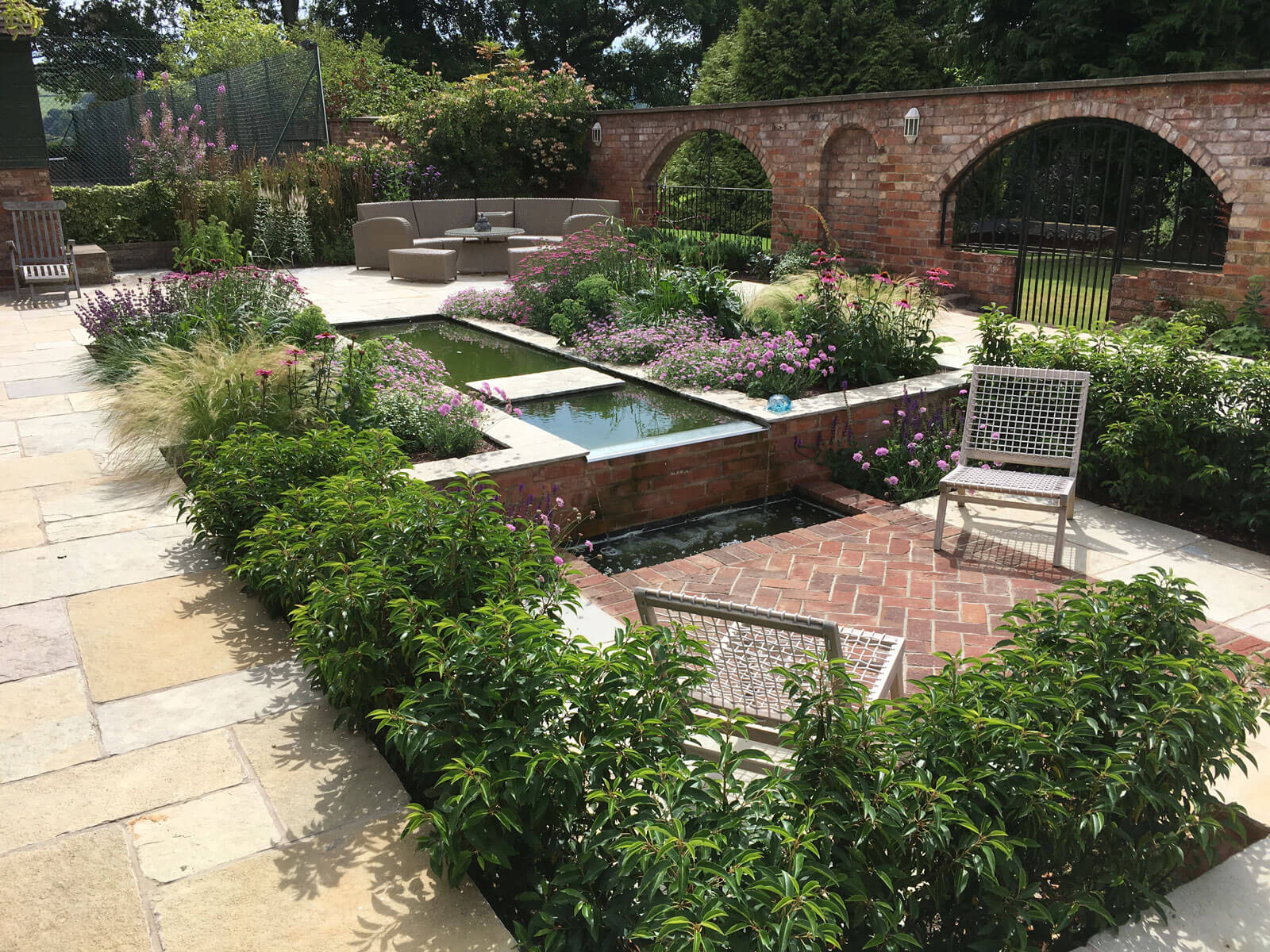
Don't think of a water feature as a luxury for your garden design — incorporating the sound of running water is important for your garden in blocking out periphery noise and creating a restful, tranquil space.
This idea for a water feature not only includes a water feature at paving level, but also uses the changes in material to highlight the water feature as a focal point of the garden.
4. Go Low-maintenance with Porcelain
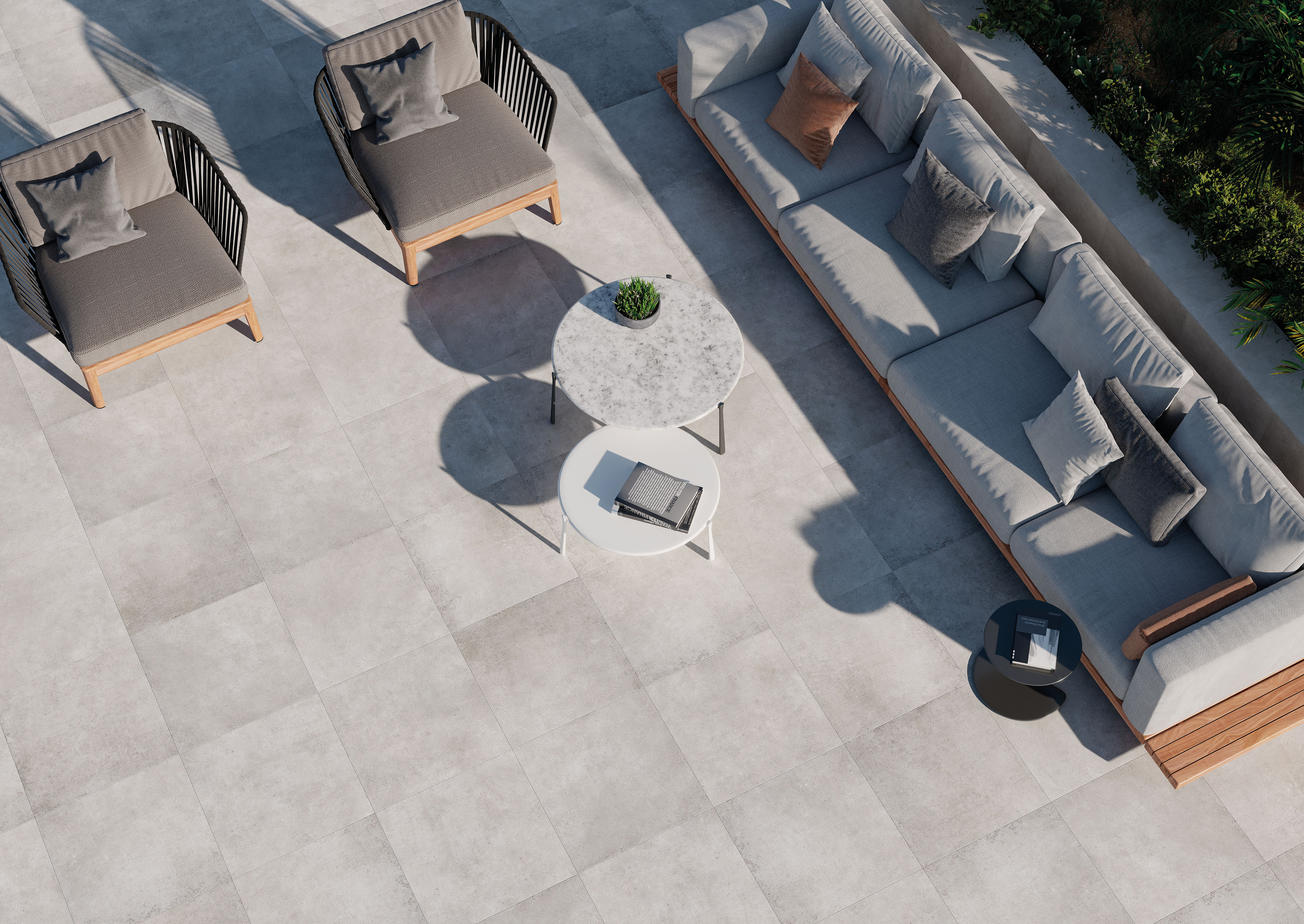
Hard-wearing, low maintenance and resistant to both frosts and stains, Porcelain paving offers a long-lasting solution for your garden.
"It can withstand high temperatures, is highly water resistant, naturally non-slip and requires very little upkeep," says Tom Clifford, general manager at Westminster Stone. "It's also extremely uniform in terms of colour, texture and pattern. It's a good substitute for decking and will last considerably longer."
"As it can be used inside and our, porcelain tiles offer the ideal way to extend your living space seamlessly into the garden," adds Jo Oliver, director at The Stone and Ceramic Warehouse.
5. Create Curves to Soften Your Garden’s Paving
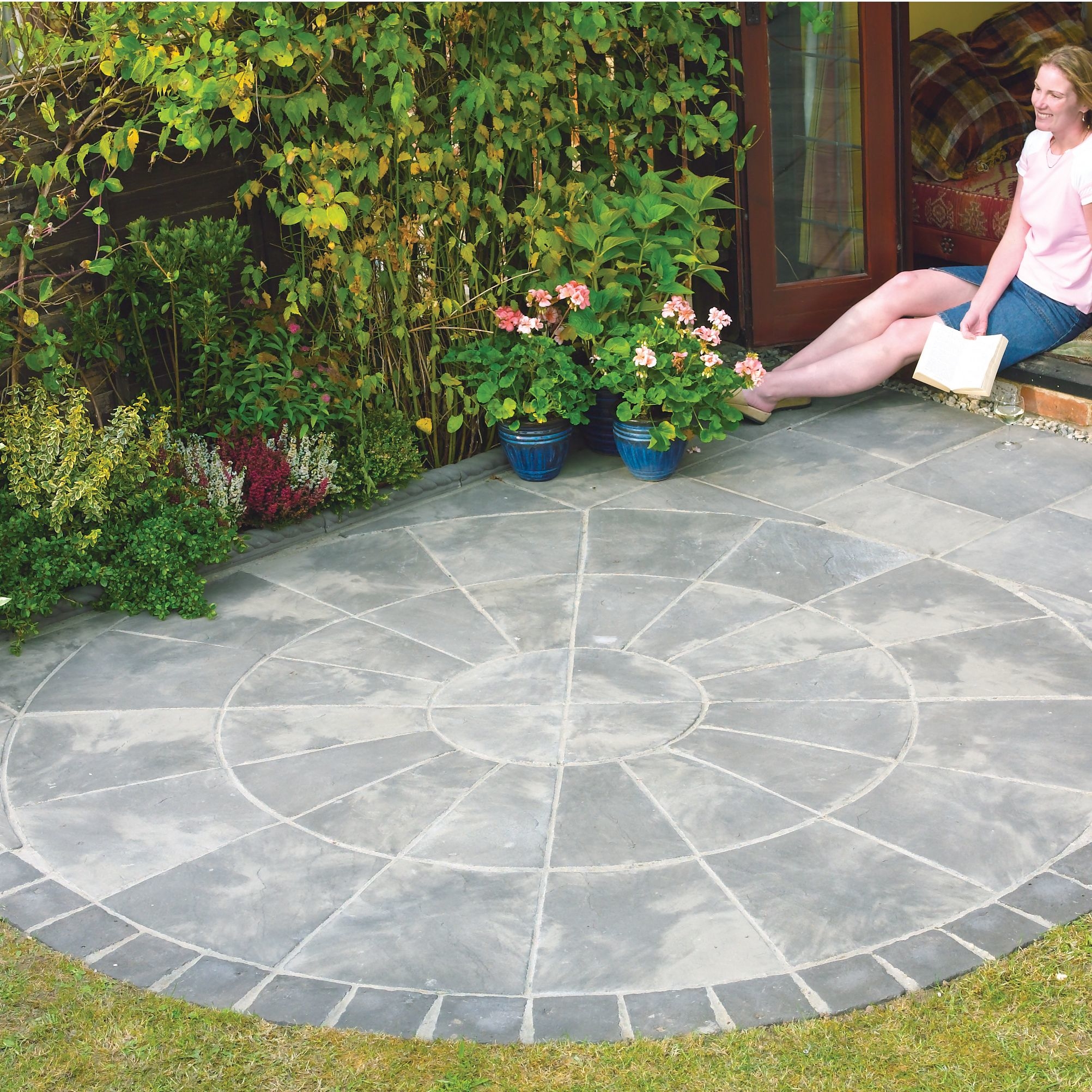
Block paving runs this risk of creating a very square, linear space. Freestyling your patio with curved edges will offer a softer, more organic finish that will suit almost every style of garden.
However, bear in mind that curved cuts will be trickier and more time consuming than standard straight cuts, which may push your labour costs up or test your DIY skills.
6. Keep A Patio Timeless with Granite
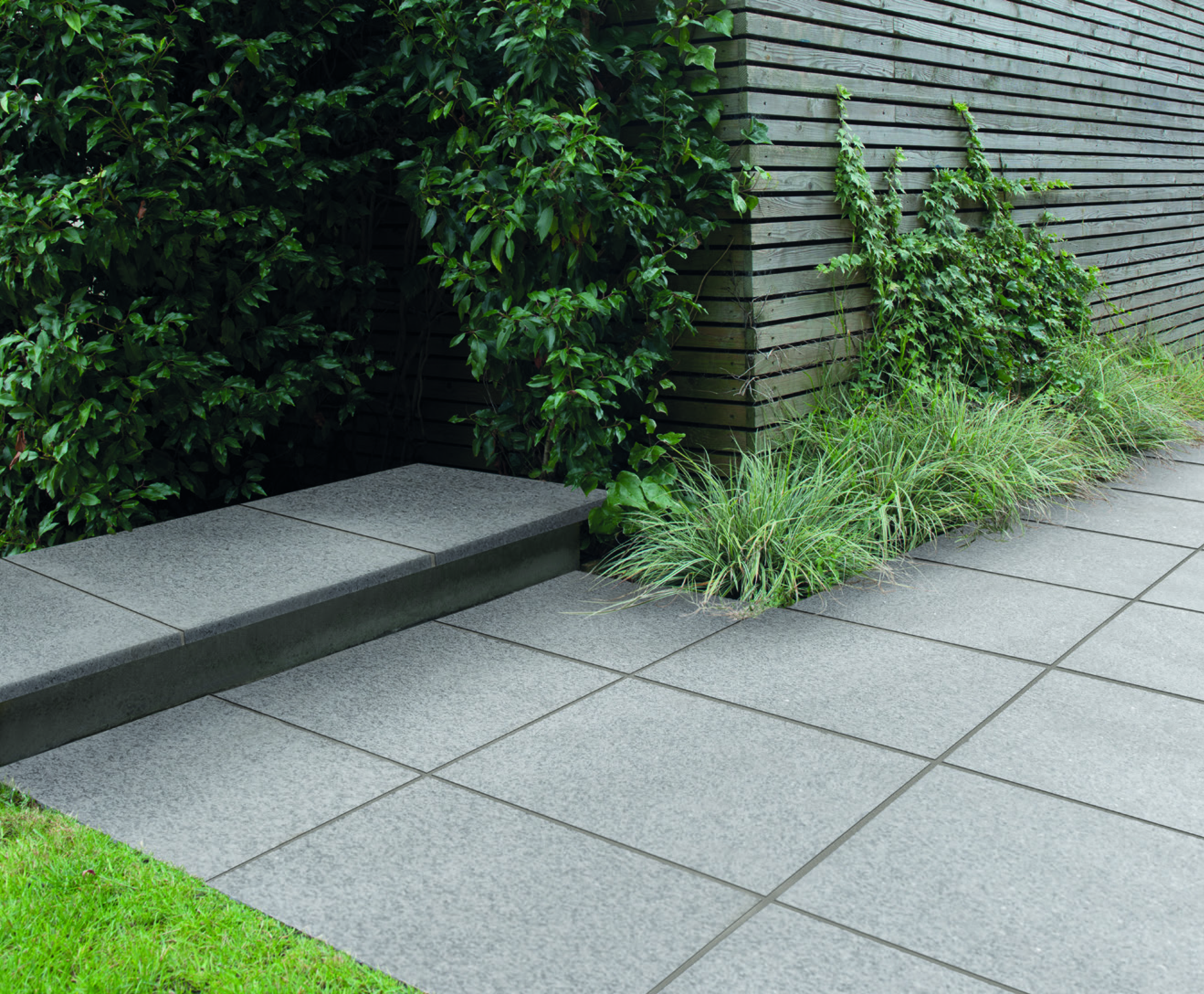
Highly durable and timeless, granite is a good choice.
"it's available in a variety of grey hues. The striking colour variations work well alongside existing architecture, soft landscaping and panting, says Lee Dunderdale, product manager at Bradstone.
Another pro is that granite is highly slip-resistant, so it's a sensible choice for parts of the garden that are likely to get wet, such as near water features.
7. Choose Large Format Paving for a Dramatic Look in Your Garden
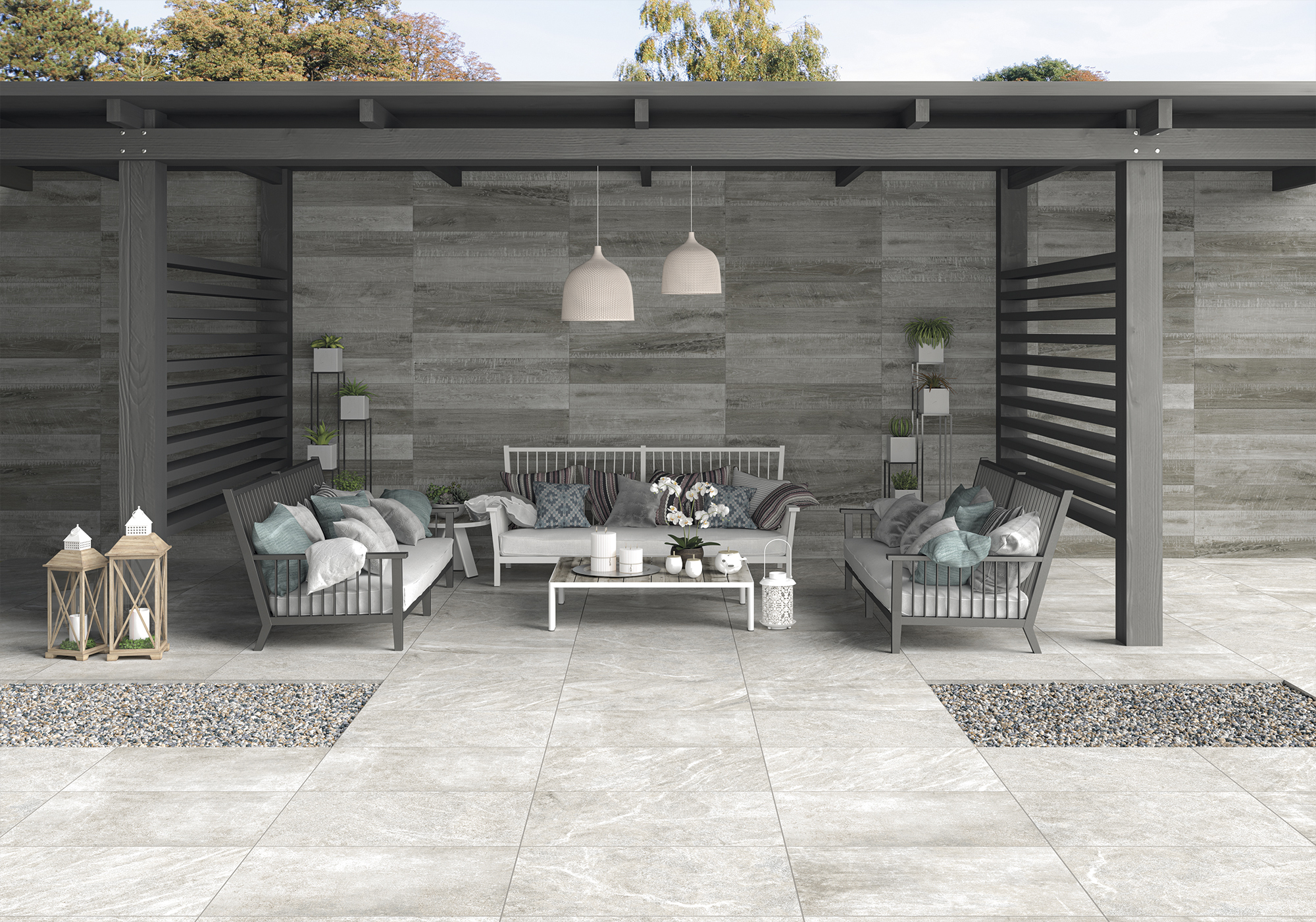
In general, the larger the paver, the smaller it will make the garden look, so choosing appropriately sized paving to your garden is important.
A large garden will be able to handle an oversized paver, helping the space to look streamlined where smaller paving would add fussiness with an overabundance of grout lines. It also helps to add a more intimate sense to a large garden, which could otherwise feel vast.
8. Enjoy a Characterful Sandstone Seating Area
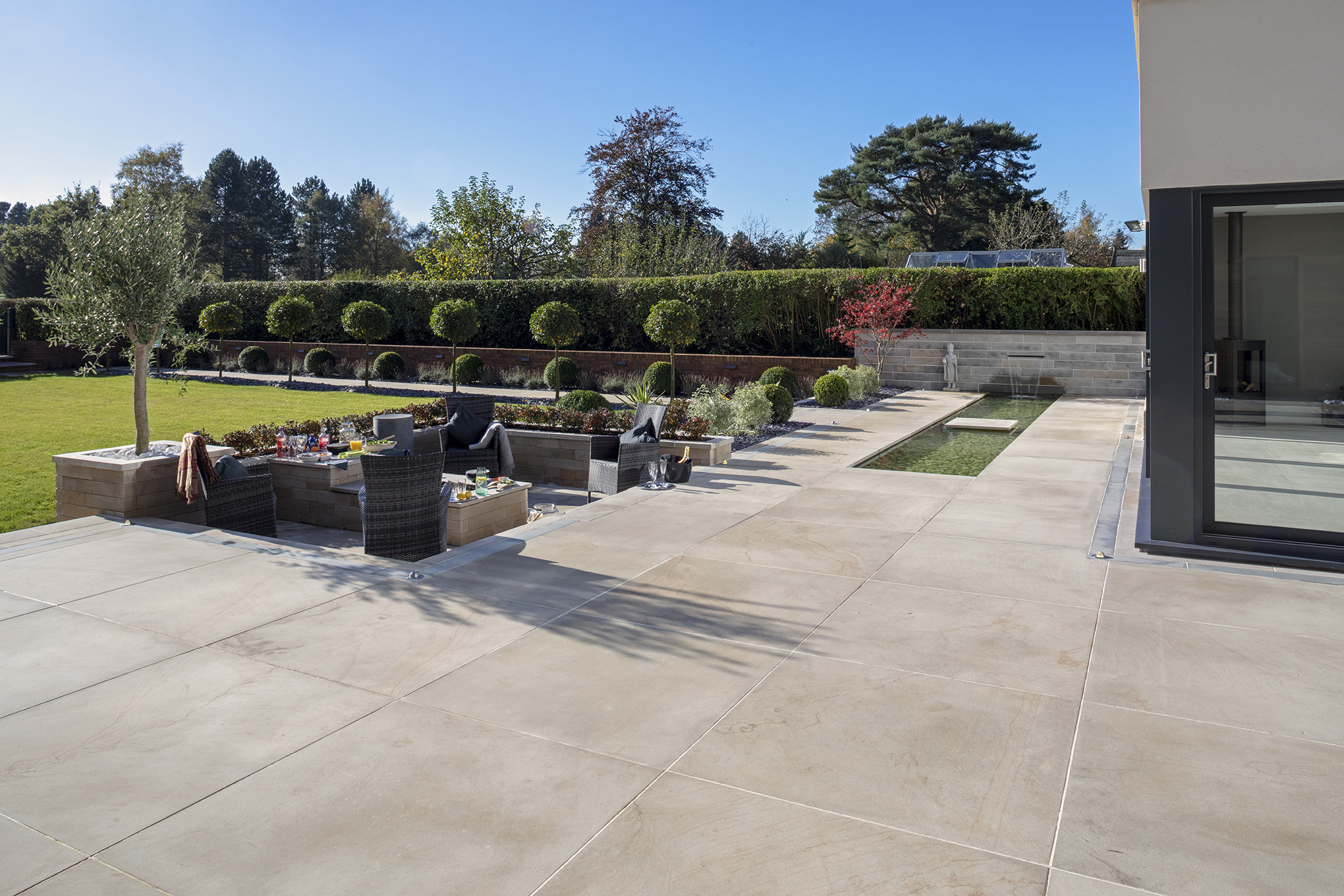
With a slightly more rippled, varied surface texture compared to limestone (sometimes described as riven), sandstone is a versatile solution that works particularly well in traditional settings.
It can also be one of the more cost-effective choices if you're keen to have natural stone paving.
"It's easy to maintain; it doesn't require any specific care when it comes to cleaning," says Wickes' Chris Moorehouse. "It tends to have good resistance to damp, fire and heat, plus UV radiation, which mans that it holds its colour."
9. Lighting Ideas for Garden Paving
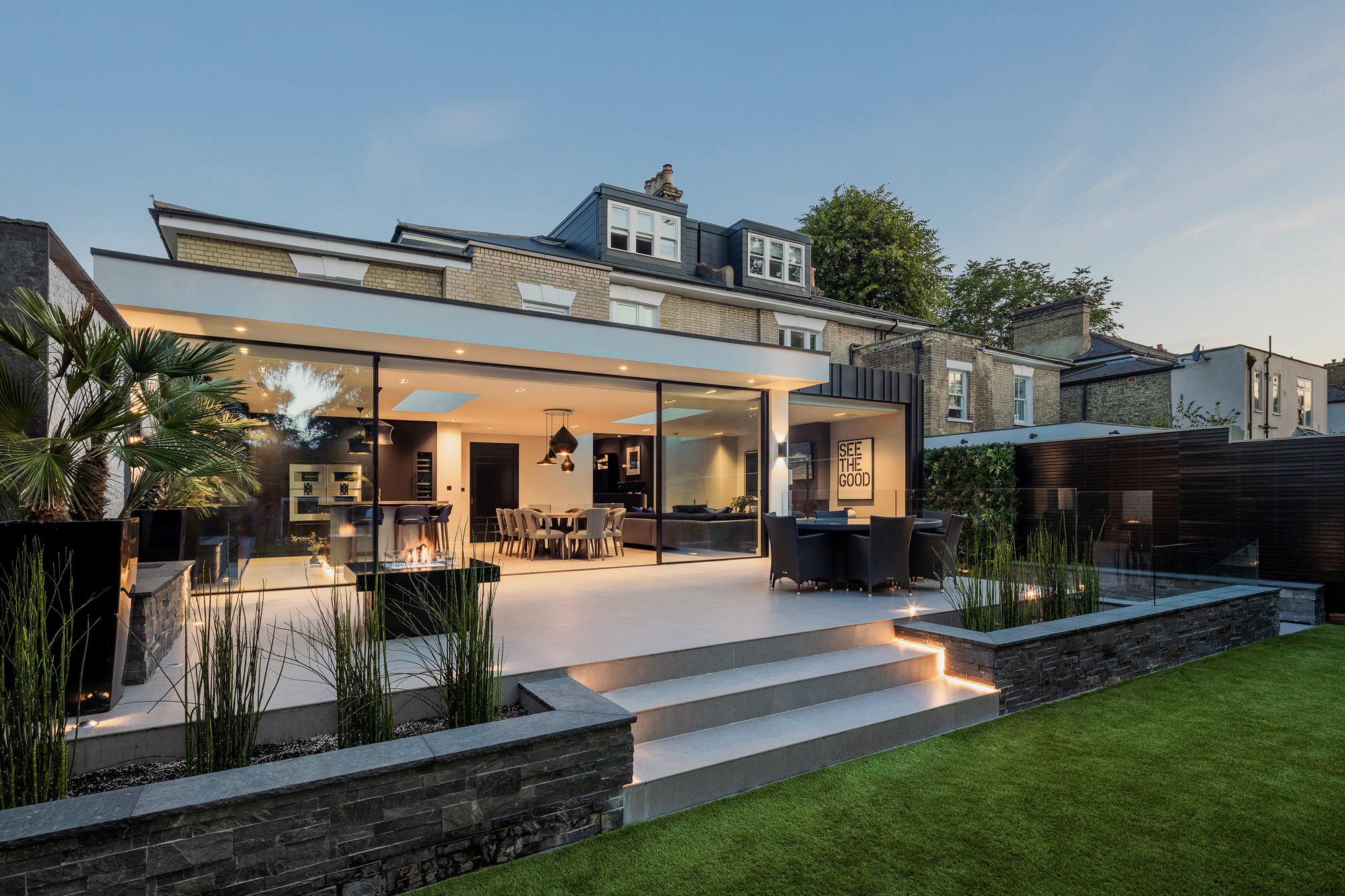
Lighting garden paving isn't just a great idea aesthetically, it ensures your garden is safe to use at night.
Recessed spotlights are great at illuminating paths and patio edges, and if you don't have power installed to provide for mains-powered uplighters, there are even garden solar light versions available.
Another garden lighting idea around paving is illuminating steps in your garden, again for good looks and safety. This idea using Stone and Ceramic Warehouse Arena Grey porcelain tiles uses warm-glow LED strip lights to match the treads of the steps.
10. Mix Paving Slab Sizes for a Dynamic Look in Your Garden
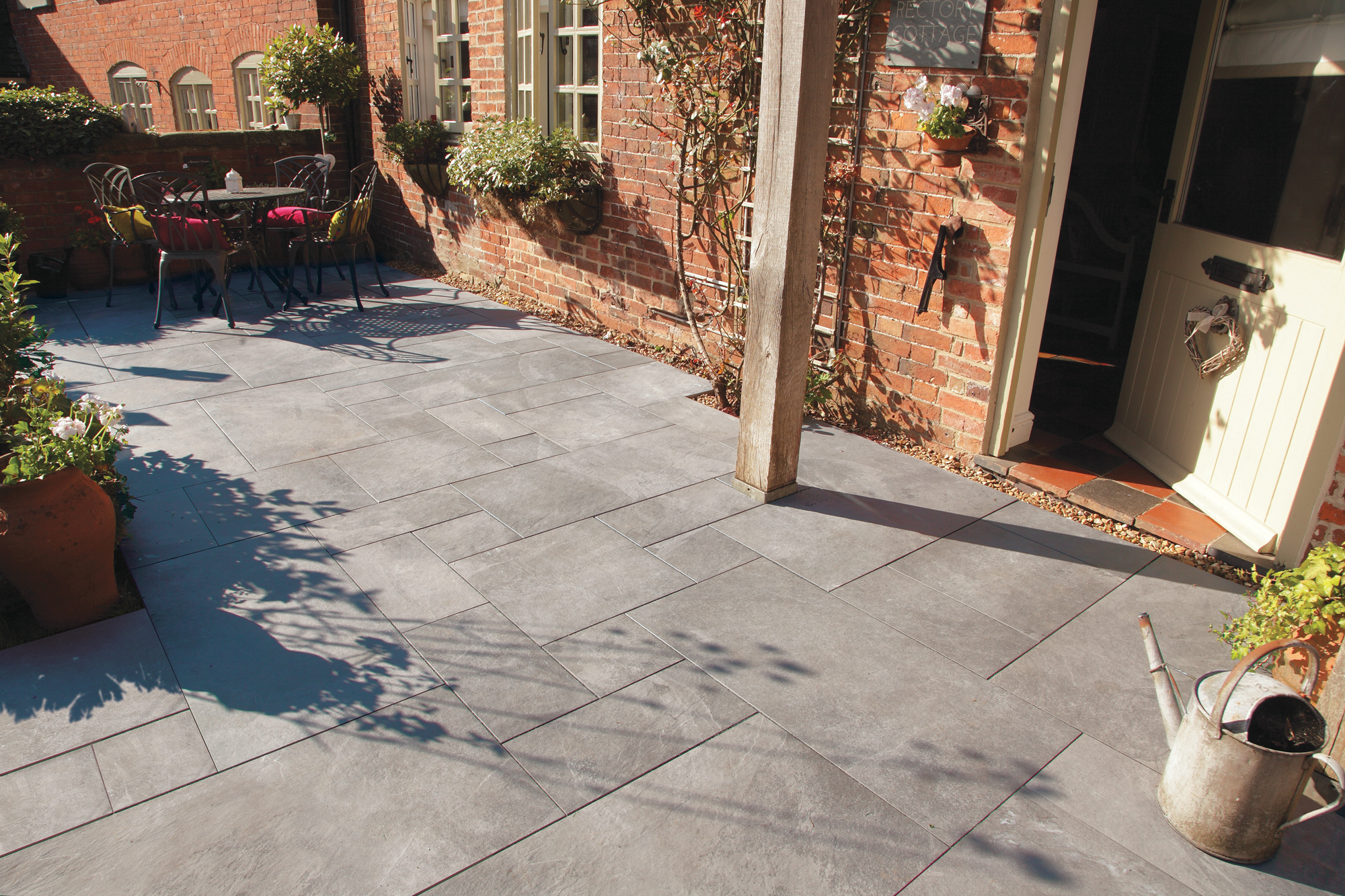
When using a simple, one material scheme, you can add subtle interest by adding variety in the size of paver used. While some designs come readily available in a mixed size layout, it's possible to create a custom design by ordering pavers in different scales of your own volition.
Here, differently sized slate pavers crate a visually interesting design that complements the red brick of the house. Slate is a durable choice and one of the strongest natural solutions; it's resistant to chips, cracks and scratches. However, slate will need a sealant to maintain their natural appeal.
11. Use Your Garden Paving for Raised Beds Too
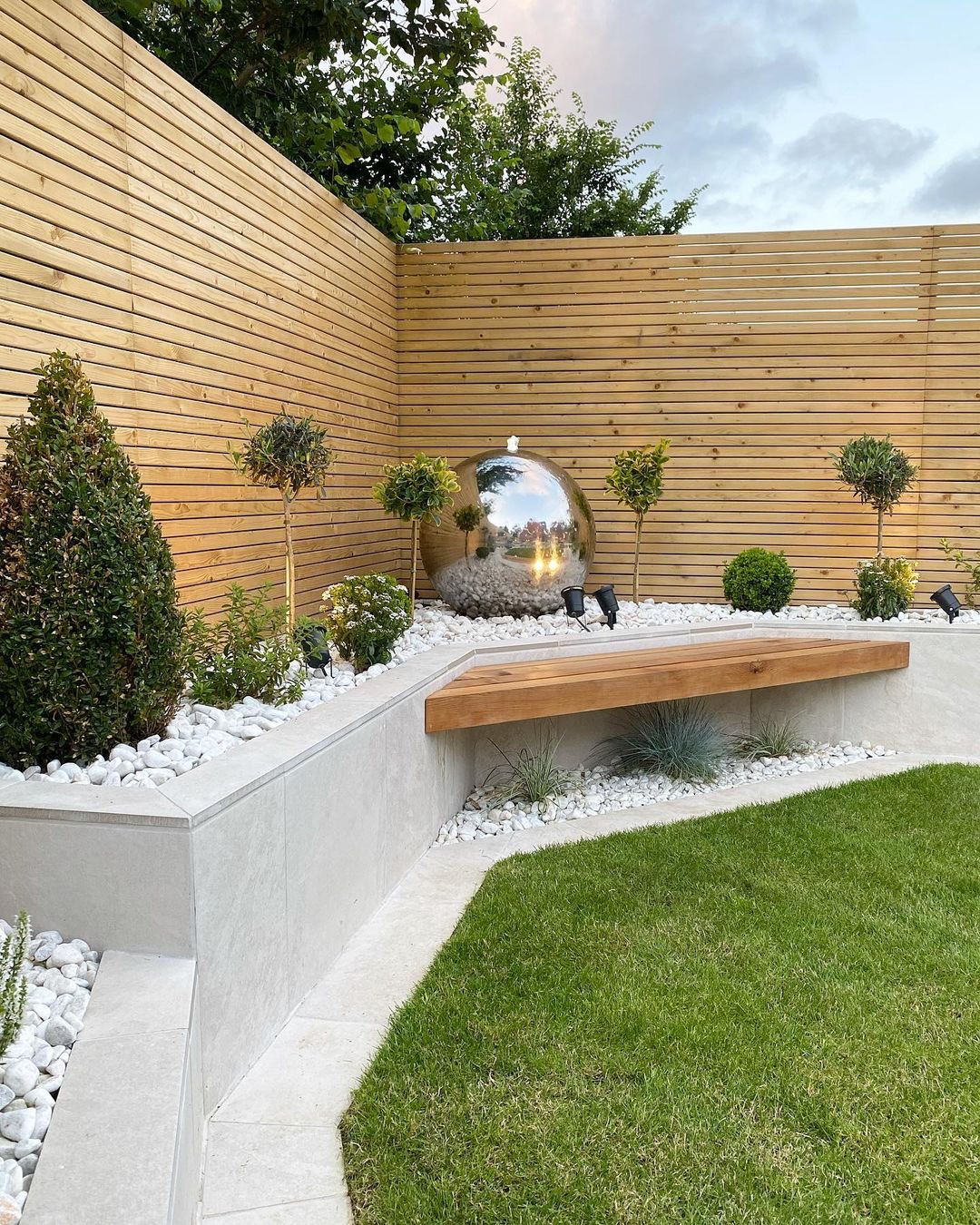
Garden paving can also make an effective cladding for raised beds, uniting these elements as part of your wider scheme.
In this scheme, Instagrammer @CarlysHomeIdeas used Tile Mountain’s Axis outdoor tile range to clad raised beds alongside the garden's main patio, while creating a border around the lawn.
12. Create a Focal Point for Your Garden With Paving
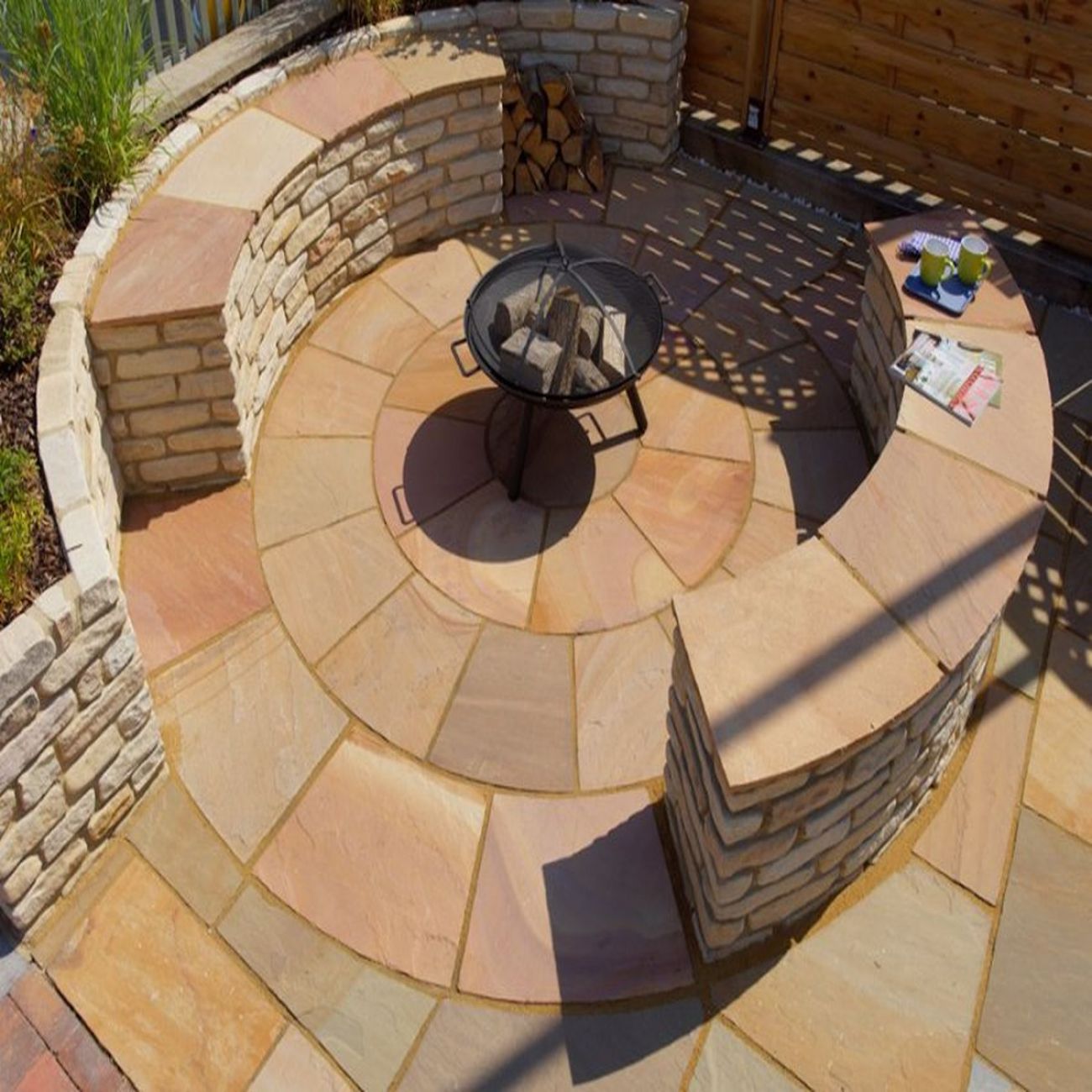
Paving can be utilised to draw focus to a certain area of a garden, helping to lead the eye across the space. One such effective tool is to create a paving circle within your patio design to zone a dining area, outdoor living area or even a bar.
This design, using pavers from Paving Direct, encompasses raised seating and a firepit as a focal point of this garden scheme.
(MORE: How to Lay a Paving Circle)
13. How to Create an Accessible Garden with Paving
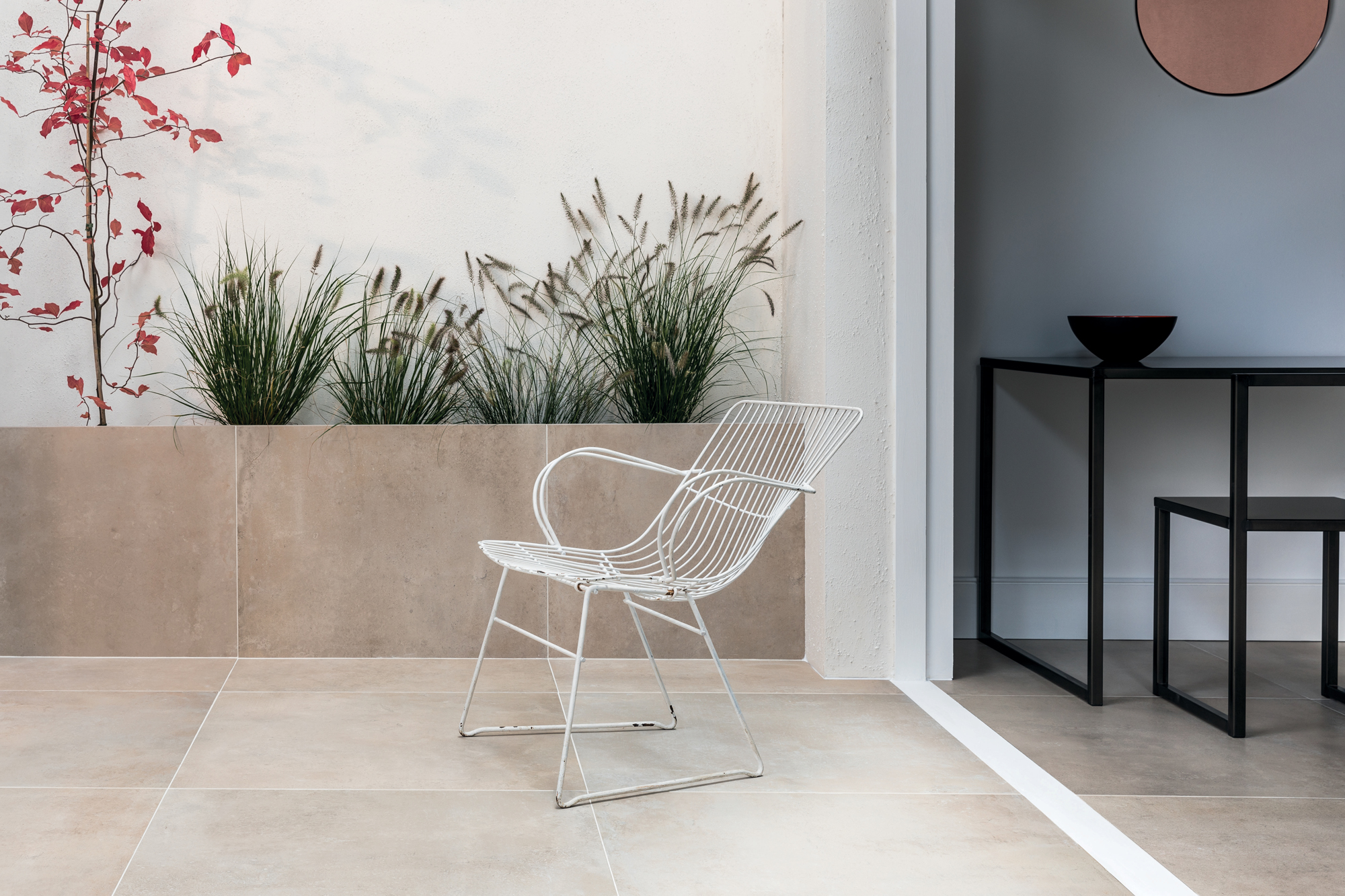
Accessible garden design is an important consideration for futureproofing your home. Stannah stair lifts' gardening guru Mark Lane has this advice for designing a garden with accessible paving:
"Ideally aim for a path around 1.2-1.5m wide, which is wide enough for two people to walk side-by-side, in a wheelchair or using a frame or stick. To stop wheels — and feet for that matter — ending up in a flowerbed, install a raised edge, either using a wooden gravel board (the board found at the bottom of a fence) or a concrete edger that stands proud around 10cm above ground level.
For the pathway, consider paving slabs rather than gravel, as little stones are very difficult for wheelchair wheels to navigate. Paving should be pointed with a minimum gap of 10mm. You want a firm, stable, non-slip surface. In some instances, anti-glare paving slabs are a good idea — especially for partially sighted or blind people."
14. Design Ideas for Garden Steps with Paving
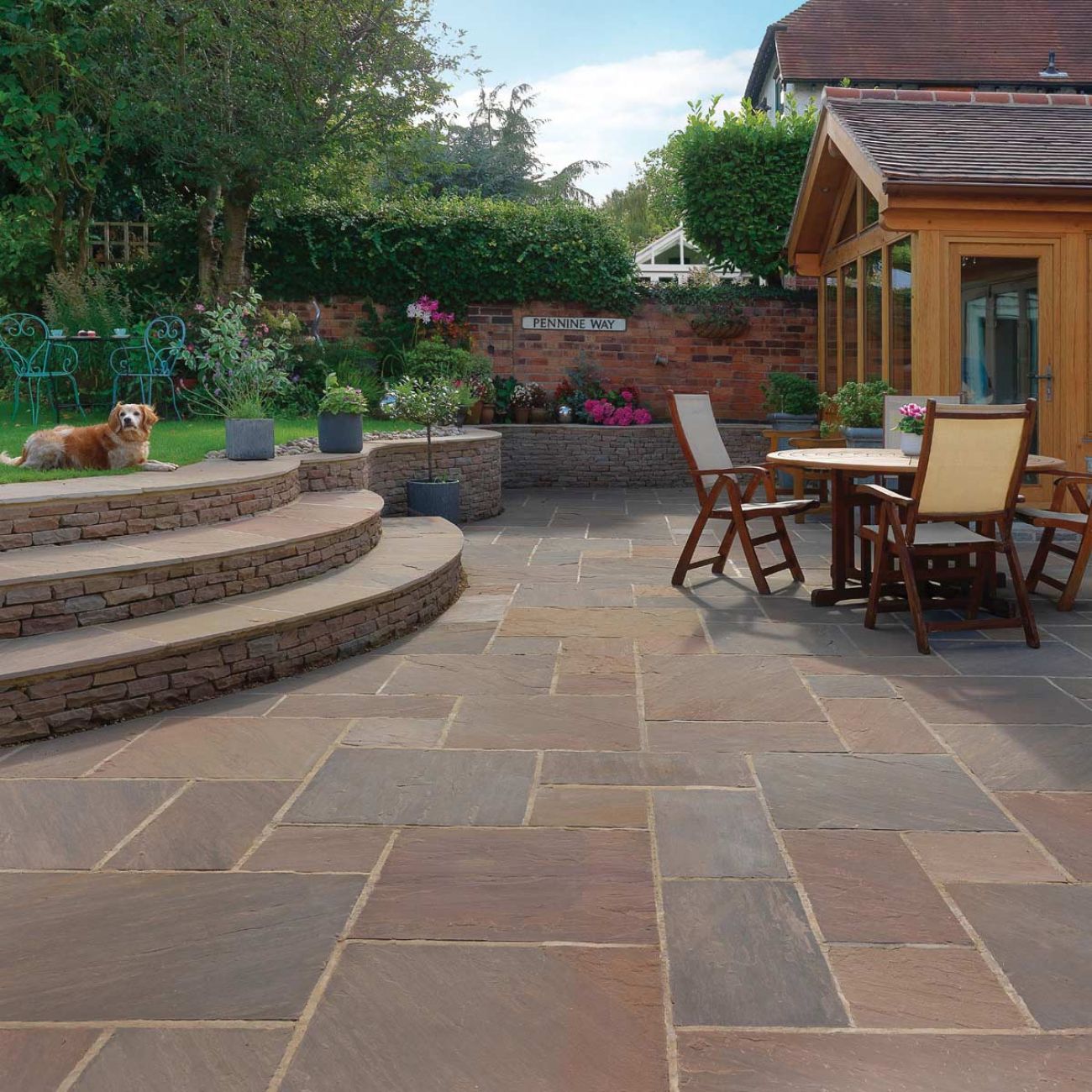
Introducing levels into your patio is a great way to add interest to your design, and steps in a sloping garden will be particularly important in connecting spaces as you move up, or down, the garden.
Using the same paving as the patio is one of the most popular choices for garden steps, but there are all kinds of brilliant ideas for making a feature out of them. This idea, showcased by Paving Direct is particularly inspiring, as it creates contrast with the blockwork risers of the garden steps and raised beds, as well as the circular shape bringing curves to contrast against the linear nature of the paving stones.
(MORE: How to Build Garden Steps)
What is the Cheapest Paving Option?
Concrete is often the most cost-effective paving option, with solutions available from £15/m2 up to £60+/m2. There is an array of choice when it comes to this cost-effective, low-maintenance material.
There are plenty of sandstone products available between £20 and £30/m2, supply only. For slabs with a special, smooth finish, prices can rise above £40/m2.
Limestone products start from around £30/m2, though there's a greater choice with a budget of £40/m2 or more, and prices can rise as high as £100/m2.
Porcelain comes with a bigger price tag and can be time-consuming to install. Expect to pay a minimum of £30m2 for 20mm thick tiles, and up to £60/m2, supply only. Cheaper tiles are available but they tend to be b=much thinner. High end products could cost upwards of £100/m2.
Most granite products cost upwards of £40/m2, and you can easily spend over £80/m2 on a supply only basis
What Can You Use Instead of Paving Slabs?
When creating a patio area, paving slabs are not the only option: gravel, bricks and decking and resin-bound paving are popular alternatives.
Gravel is the most cost-effective in terms of materials and labour (it can be laid on a DIY basis), while resin-bound paving will require a professional.

Can Your Lay Paving Slabs on Soil?
Paving slabs cannot be laid directly onto a soil ground and a level sub base must be created before installation.
"Allow 150mm for the foundation, mortar bed and paving," explains Lee Dunderdale, project manager at Bradstone. "If you are laying directly next to a house then the finished patio should be at least 150mm below the damp proof course. This means you’ll need to dig the area to a minimum depth of around 300mm below the DPC.
"To ensure water doesn’t collect on the paving, the foundation needs a fall of 1 in 60, either to a suitable drainage or run-off area, such as the lawn, which means 1cm of fall for every 60cm of width. For example, a 3m run will need a fall of 5cm.
"To create a firm base, cover the whole area with MOT Type 1 to a minimum depth of 100mm when fully compacted. A compactor plate is essential to do this properly.
"The back of the slabs should be primed with a polymer modified cementitious primer to aid adhesion to the mortar bed and prevent movement in years to come.
"Lay the slabs on a 30mm thick full mortar bed, which should support the whole slab and not just the corners. Use a mortar mix of four parts sharp sand to one part cement. Mix together with just enough water to make it damp and workable, but not overly wet and runny."
Get the Homebuilding & Renovating Newsletter
Bring your dream home to life with expert advice, how to guides and design inspiration. Sign up for our newsletter and get two free tickets to a Homebuilding & Renovating Show near you.
Hugh is editor of sister title Livingetc.com and former digital editor of homebuilding.co.uk. He has worked on a range of home, design and property magazines, including Grand Designs, Essential Kitchens, Bathrooms, Bedrooms and Good Homes. Hugh has developed a passion for modern architecture and green homes, and moonlights as an interior designer, having designed and managed projects ranging from single rooms to whole house renovations and large extensions. He's currently renovating his own Victorian terrace in Essex, DIYing as much of the work as possible. He's recently finished his kitchen renovation, which involved knocking through walls, and landscaping a courtyard garden, and is currently working on a bathroom renovation.

